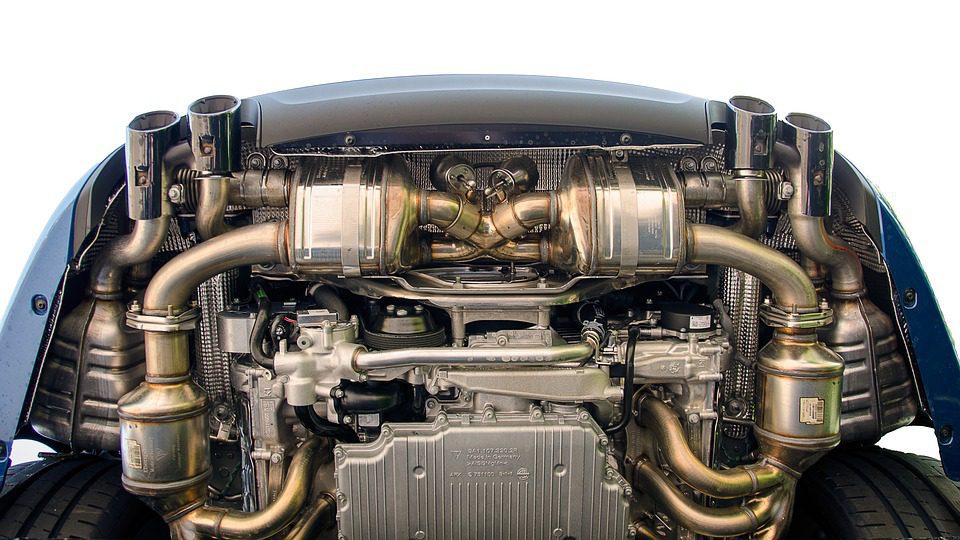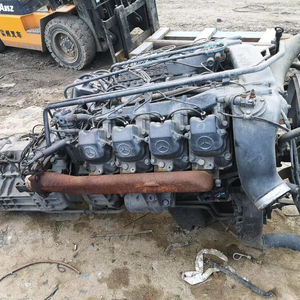Import Engines: A Comprehensive Guide to Finding the Right Fit
Discovering the most recent Technical Developments in Import Engines and Exactly How They Boost Driving Experience
In the realm of automobile design, the landscape of import engines is undertaking a profound makeover driven by cutting-edge technological technologies. From the evolution of turbocharged engines to the integration of hybrid modern technology, the most recent developments are transforming the driving experience in ways formerly unimaginable. As import makers press the boundaries of efficiency and effectiveness via enhanced gas shot systems and innovative engine management options, the concern arises: Just how do these developments absolutely impact the method we interact with our cars when driving?

Evolution of Turbocharged Engines
In the automotive sector, the advancement of turbocharged engines has considerably transformed the landscape of performance and performance. Turbocharging, as soon as largely seen in high-performance cars, has now become a mainstream technology embraced by a vast array of cars, from compact hatchbacks to high-end sedans. The basic concept behind a turbocharged engine is easy yet effective - forcibly more air into the combustion chamber, it enables even more fuel to be melted, resulting in boosted power result.
One of the crucial advantages of turbocharged engines is their ability to supply even more power from smaller, extra fuel-efficient engines. This downsizing fad has actually resulted in a decrease in discharges without endangering performance, making turbocharging an appealing option for automakers making every effort to fulfill strict ecological guidelines. Furthermore, turbocharged engines supply enhanced torque at reduced RPMs, providing chauffeurs with an extra vibrant and receptive driving experience - import engines.
As modern technology continues to development, we can anticipate more developments in turbocharging, causing also better levels of efficiency and performance in the automobile market.
Developments in Gas Shot Systems
With the continual progression of automobile modern technology, significant advancements have actually been made in fuel injection systems. Modern gas shot systems have actually progressed to supply fuel a lot more effectively and exactly into the engine cyndrical tubes, boosting total engine performance and gas effectiveness. Among the crucial developments in fuel shot systems is the shift from traditional port fuel shot (PFI) to advanced direct fuel shot (DFI) modern technology. DFI systems inject gas directly into the burning chamber at high pressures, resulting in better gas atomization and burning, causing enhanced power result and lowered exhausts.
Moreover, the assimilation of electronic control units (ECUs) and sensing units in gas injection systems has enabled real-time changes to sustain shipment based upon different elements such as engine lots, temperature, and driving problems. This level of accuracy guarantees ideal fuel-air mixture proportions, maximizing engine performance while reducing fuel intake and exhausts. Additionally, improvements in gas injector design, products, and spray patterns have actually contributed to cleaner combustion and smoother engine procedure. To conclude, the continuous technologies in gas injection systems play a critical duty in enhancing driving experience by offering improved efficiency, gas economy, and ecological kindness.
Assimilation of Hybrid Innovation
The development of gas injection systems in the direction of greater efficiency and efficiency has actually set the stage for the smooth combination of crossbreed modern technology right into modern-day engines. Crossbreed technology integrates the usage of conventional internal combustion engines with electrical propulsion systems, supplying boosted fuel efficiency and reduced discharges. By incorporating electric motors and batteries into the powertrain, hybrid engines can supplement the interior combustion engine during velocity or low-speed driving, therefore boosting general efficiency.

Boosted Engine Administration Solution
What are the essential improvements in engine management systems that are boosting the efficiency and performance visit this website of modern engines? Engine administration systems have undergone significant advancements to maximize engine performance and efficiency. One essential innovation is the combination of innovative sensing units that continuously check various criteria such as engine temperature level, air-fuel ratio, and exhaust emissions. These sensing units offer real-time information to the engine control unit (ECU), enabling for exact changes to be made to enhance combustion procedures and gas efficiency.
Moreover, modern engine monitoring systems use advanced formulas and expert system to analyze the data accumulated by sensing units and make dynamic adjustments to aspects such as ignition timing, fuel injection, and turbocharger boost pressure. This level of precision and flexibility lead to enhanced engine responsiveness, enhanced power result, and decreased gas usage.
In addition, engine monitoring systems now feature sophisticated analysis capacities that can detect and resolve issues such as misfires, sensor breakdowns, and gas system irregularities in real-time, therefore improving overall engine reliability and durability. These innovations in engine monitoring systems play a crucial function in improving Recommended Site the driving experience by supplying optimal efficiency, gas performance, and dependability.
Impact of Lightweight Materials
Integrating light-weight materials in engine production has reinvented the auto industry's approach to enhancing gas performance and performance. Using products such as carbon fiber, light weight aluminum, and titanium has substantially lowered the general weight of engines, resulting in improved power-to-weight ratios and raised gas economy. These lightweight materials offer a greater strength-to-weight proportion contrasted to standard materials like steel, enabling better toughness without jeopardizing performance.
One of the vital benefits of utilizing lightweight products in engine building is the decrease of inertia, causing quicker engine action times and boosted overall car agility. In addition, the lighter weight adds to decrease power usage, making cars much more eco-friendly by reducing discharges.
Additionally, the execution of lightweight products in engine parts such as pistons, connecting poles, and crankshafts has actually made it possible for engineers to push the borders of efficiency without sacrificing integrity (import engines). This development has actually paved the way for a lot more effective and efficient engines that provide a superior driving experience see page while satisfying stringent exhausts criteria
Final Thought
To conclude, the current technological developments in import engines have actually considerably improved the driving experience. From the advancement of turbocharged engines to developments in gas injection systems, assimilation of hybrid innovation, improved engine administration systems, and the usage of lightweight materials, these developments have actually jointly boosted performance, gas efficiency, and general driving characteristics. As technology remains to development, we can expect much more amazing developments in the future of import engines.
Modern fuel shot systems have evolved to deliver gas extra successfully and specifically right into the engine cyndrical tubes, boosting overall engine performance and gas performance - import engines. By incorporating electric motors and batteries into the powertrain, crossbreed engines can supplement the internal combustion engine throughout velocity or low-speed driving, therefore improving overall performance
What are the crucial developments in engine monitoring systems that are improving the performance and performance of modern engines? Engine administration systems have undertaken significant developments to maximize engine efficiency and effectiveness. From the evolution of turbocharged engines to improvements in gas injection systems, combination of hybrid modern technology, boosted engine administration systems, and the usage of lightweight products, these innovations have actually collectively boosted performance, gas performance, and general driving characteristics.